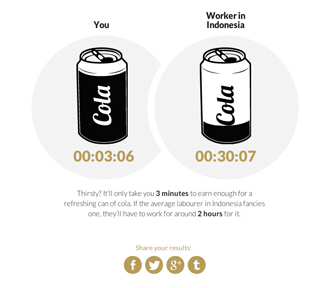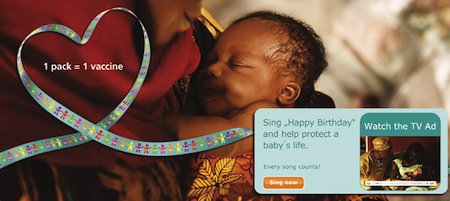We need to think differently about what altruism means by looking at a host of new creative opportunities.
There has never been such a need, drive, push to help each other on both a local and global scale. Goodwill, charity, philantrhopy, altruism…different names but the same end point. And, in the commercial world, the pressure is even more fierce for brands to put their money where their mouths are. But, there’s a catch. Whilst we may smile at random acts of kindness and goodwill to one another, brands can’t just be seen to be showing a good face, we want them to really be doing good—consistently—and not just making a donation.
It’s right up there on the corporate agenda alongside—and sometimes integrated with—sustainability. Corporate Social Responsibility is big business and can make a difference to a business’ bottom line. And new brand/charity initatives are hitting the headlines on an almost daily basis. The latest from our coffee shops. The idea of «Suspended Coffee» is simple: when you buy yourself a coffee at a participating cafe, you also pay for a second one— which can then be claimed by someone who cannot afford it themselves. The movement has been growing in popularity and embraced by coffee shops around the world with Starbucks recently announcing that it will now be adopting a version of the scheme. It’s a fresh idea and different to just giving a homeless person the price of a cup of tea—but is it already just another generic means of doing good?
A recent article here on Popsop broke down the 3 ways that brands can now engage with society in a philanthropic capacity: fundraising and giving, open online platforms and long-term, curated initiatives to improve social landscapes. These 3 routes have been proven to work and there are not—nor should there be—boundless avenues available. But we believe that there is more scope and more opportunity to design for philanthropy and for it to be a creative part of the brand strategy rather than just an add-on campaign or a badge on the packaging. And it’s not discriminatory of status. The luxury sector is one (maybe ironically) where we are seeing a huge breakthrough in more creative charity alignment and philanthropic moves.
When it comes to luxury brands—with such a fixed perception of who they are, where they’ve come from and what they represent—it is probably harder to get the fit right than for most. But for luxury—as for any brand—it is imperative to think from the inside out about the core brand beliefs, what would be the right route and how your brand fits with a particular charitable action rather than just going for a momentary ‘halo’ effect and association.
Whereas—by its very definition—luxury has always had a desirable aesthetic, charities traditionally have not. However, many more are now realizing the importance and significance of this. Poke has redesigned the Global Rich List using humorous but hard-hitting infographics intended to inspire generosity and reveal the unequal distribution of wealth. And when we created an identity for Harrison’s Fund—a charity to raise awareness of Duchenne Muscular Dystrophy—we broke away from the usual sombre and mellow approach favoured by disease charities and focused on the power of positivity to reflect the cheeky, energetic and bursting with life personality of 5 year old Harrison Smith whose parents set up the fund.

The design and aesthetic of both the brand and the charity is important but not as key to their future as the need to create the correct design and aesthetic of any brand and philanthropic partnership to best illustrate this shift from receiving to giving—starting with the design of the identity and its creative execution across every and all brand communication. Think Pampers & UNICEF 1 pack = 1 vaccine campaign as strong and hard-hitting (and still growing) as it was at launch in 2006.

With a new age of consumerism driven by inventiveness, creativity, discovery and giving back, brands will need to shift in line with this from being detached and untouchable to finding inspiring ways to explore causes, blend influences and create awareness. It’s not about brands looking for another new— or a 4th—philanthropic route, but about how they choose to approach philanthropy by looking for a unique, integrated, truly creative—and therefore more meaningful—proposition.
All design challenges are about resolving problems. And, in this respect, that’s all we have to do—think differently about what altruism means by looking at a host of new creative opportunities, which can appeal to the hearts, minds and desires of the brand/charity consumer whilst also addressing our changing society.
About the Author
Darren Foley, Managing Director at Pearlfisher, London, joined the company in 2002 as Realisation Director, inventing the concept of realisation and advocating a design process in which our technical and creative teams work in harmony from the beginning. He has worked in the design industry for close to 25 years, starting out as a junior production artist, and amassing an unparalleled depth of knowledge for the discipline.
